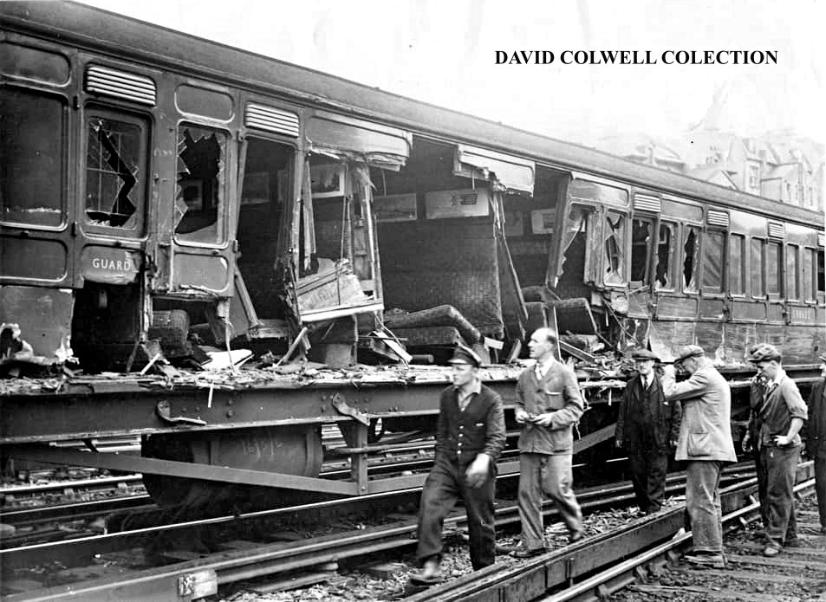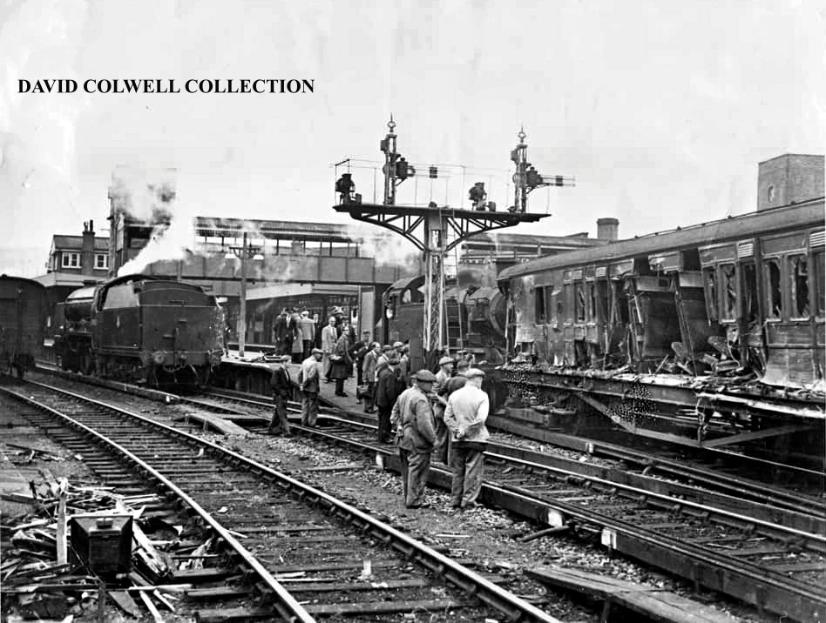
SATURDAY 8th JUNE 1957
ELECTRIC COAST TRAIN HITS STEAM ENGINE
Involving Ore Motorman Thomas Page
EXTRACTED FROM THE HASTINGS OBSERVER
PHOTOS FROM DAVID COWELL COLLECTION

Motorman escapes in Hastings rail crash when a coastal train entering Hastings Station on Tuesday afternoon collided with a stationary express locomotive on an adjourning track, Motorman Thomas Frederick Page (60), of Lyndhurst Avenue, Hastings, controlling the electric train, had an amazing escape from death although he was injured.
The four coach electric train arriving from Brighton at x.5p.m. was about to run into platform 3 when the leading coach struck the projection of the School Class engine Blundells (No.30932).
Virtually the whole of the left hand side of the leading coach was ripped out before the train could be stopped, but none of the passengers on the train numbering more than 30 was injured because this coach by a fortunate chance was empty.
Motorman Page was sitting on the left hand side of the driving cabin, which took the main force of the smash but he escaped with little more that a cut head and severe shock.
Rescue workers helped hm from the wrecked and twisted cabin and was taken in a St John Ambulance to the Royal East Sussex Hospital.

Travelling in the train from Bexhill was “Observer” reporter, who writes.
Some of us were already standing up to leave the train as it approached the platform when there was a grinding crack and a violent jerk which threw several people on to the seats. The train shuddered and then stopped.
People sat shocked for a moment then flung open windows to see what had happened. We saw the track alongside the leading coach scattered with wood fragments and water gushing from the 4,000 gallons in the locomotive tender as it stood embedded in the gashed side of the electric train.
Within a few minutes railwaymen had freed the trapped motorman and worked along the leading carriage looking for injured passengers. Fortunately there were none, though a full turn-out of ambulance men and fireman had been rushed to the station ready for any emergency.
There was a ten minute wait while the current on the conductor rail was switched off, then railwaymen placed ladders and helped us out of the carriages.
Passengers laughed and joked about their narrow escape as they walked the few yards along the rails to the platform.
Many of them went straight on to a waiting Ashford steam train which was held back a few minutes for them.
Less than half an hour after the collision a light engine hauled away the damaged electric train and freed the line.
It was found that the locomotive tender had two axle boxes cracked, in addition to the punctured tank, but the engine was able to move out under its own power.
Other traffic was not affected.
Mr. Page (right) was allowed to return home from hospital later in the day, when his condition was stated to be much improved. He rested in bed at home for the following two days.

